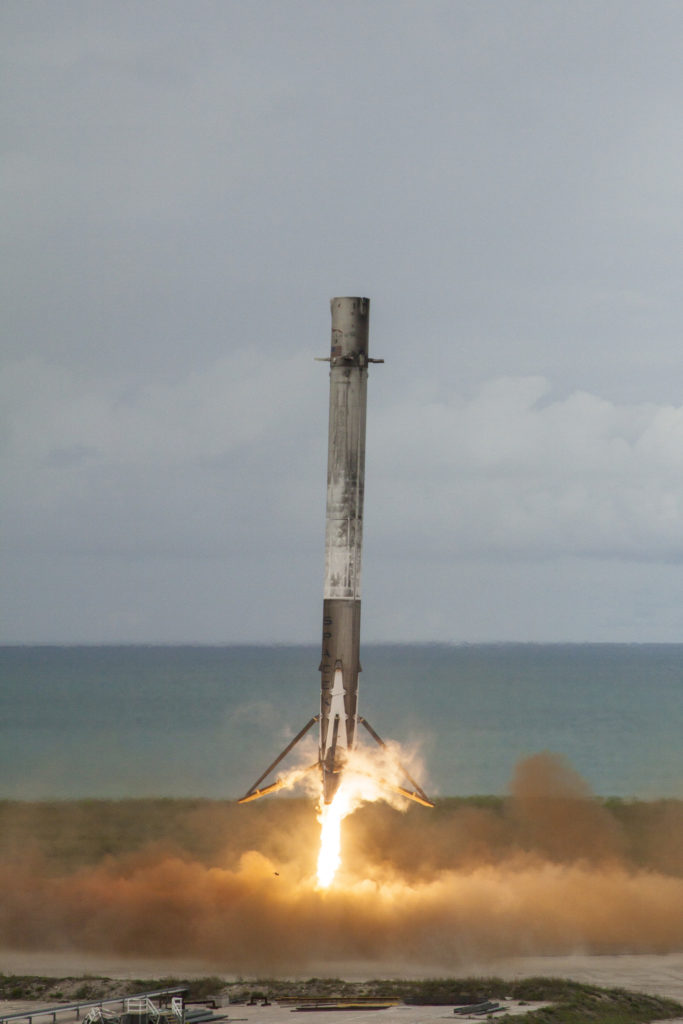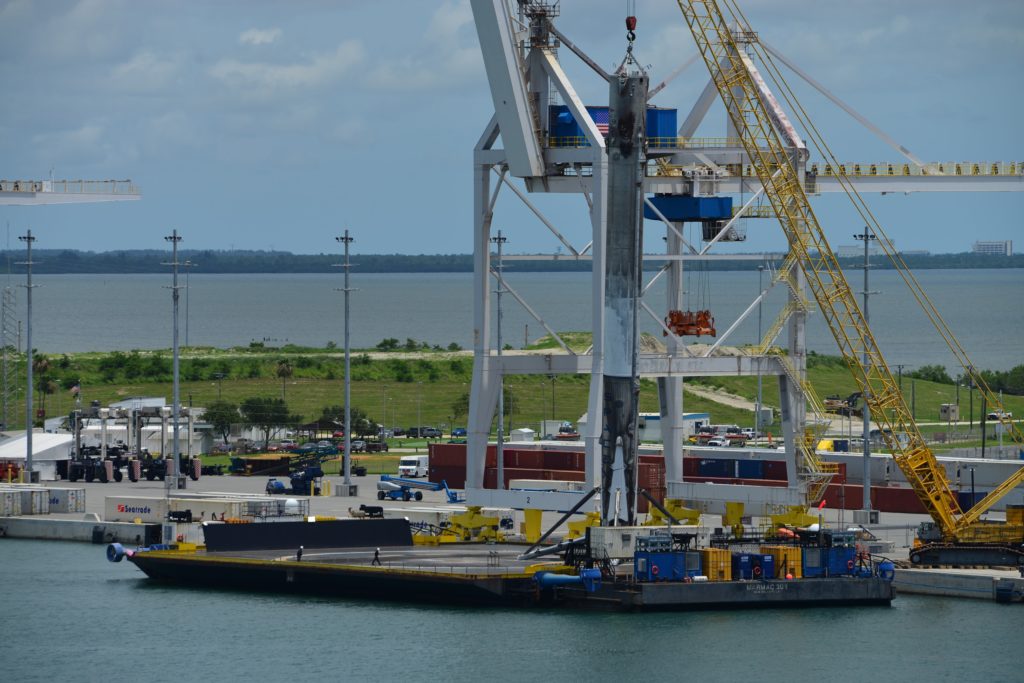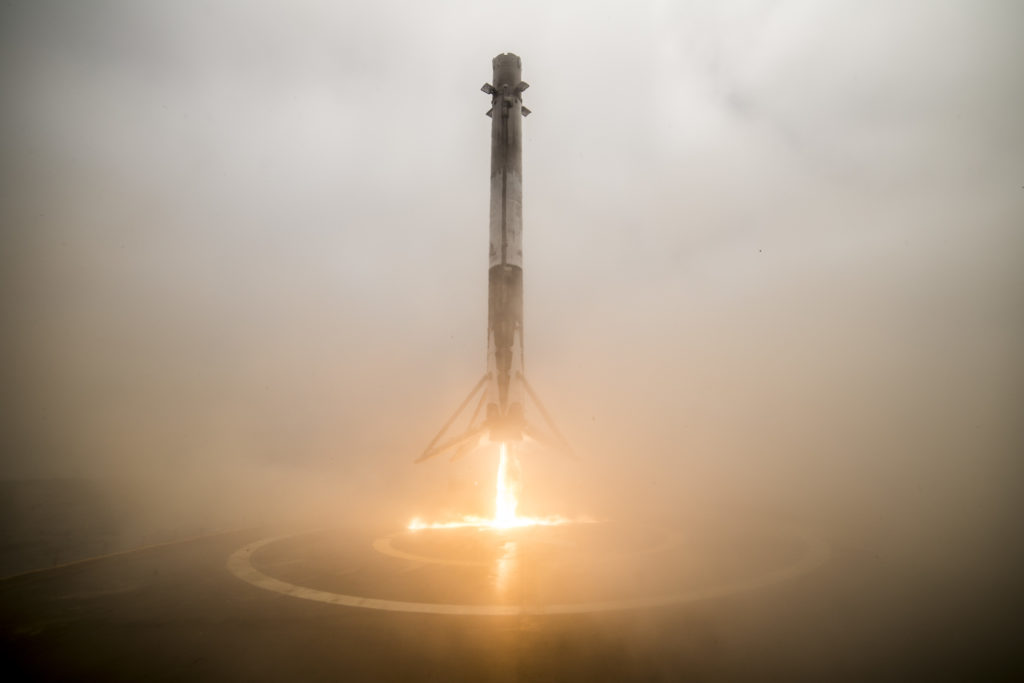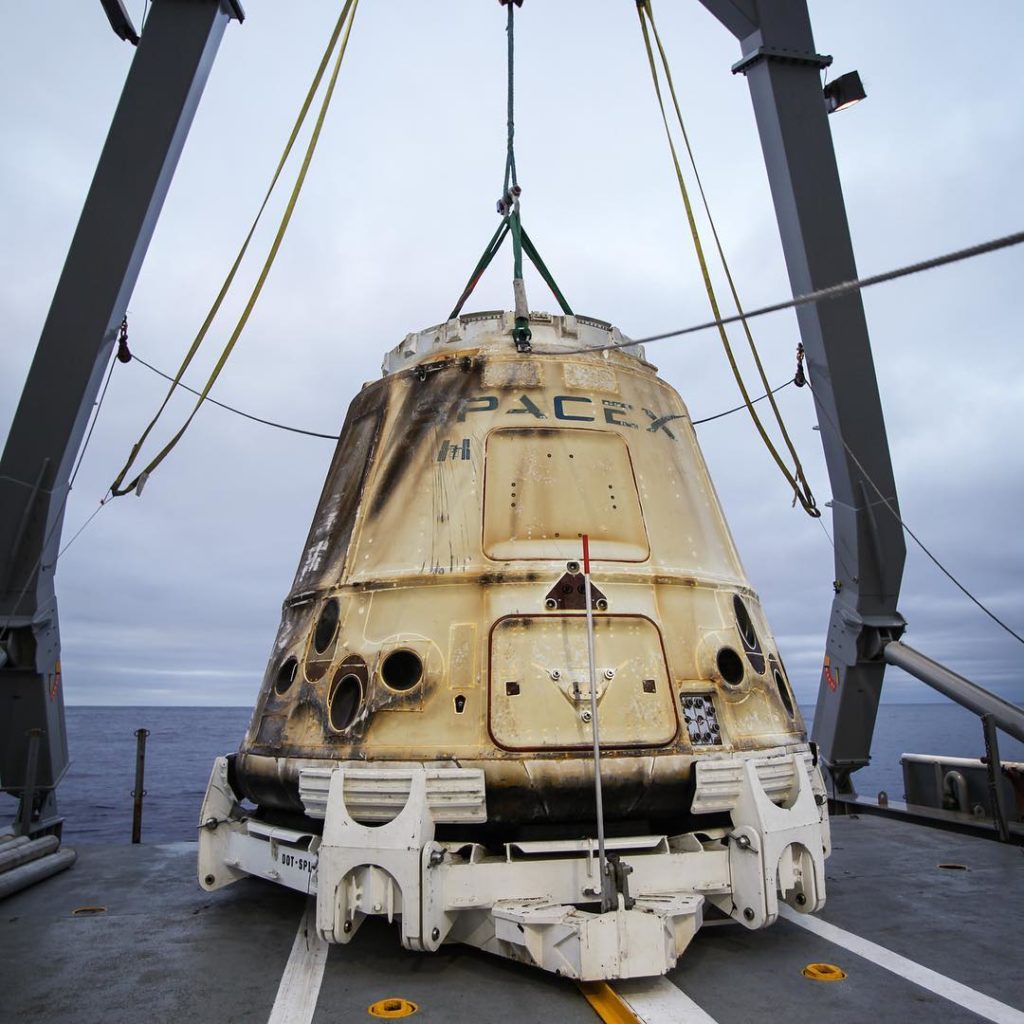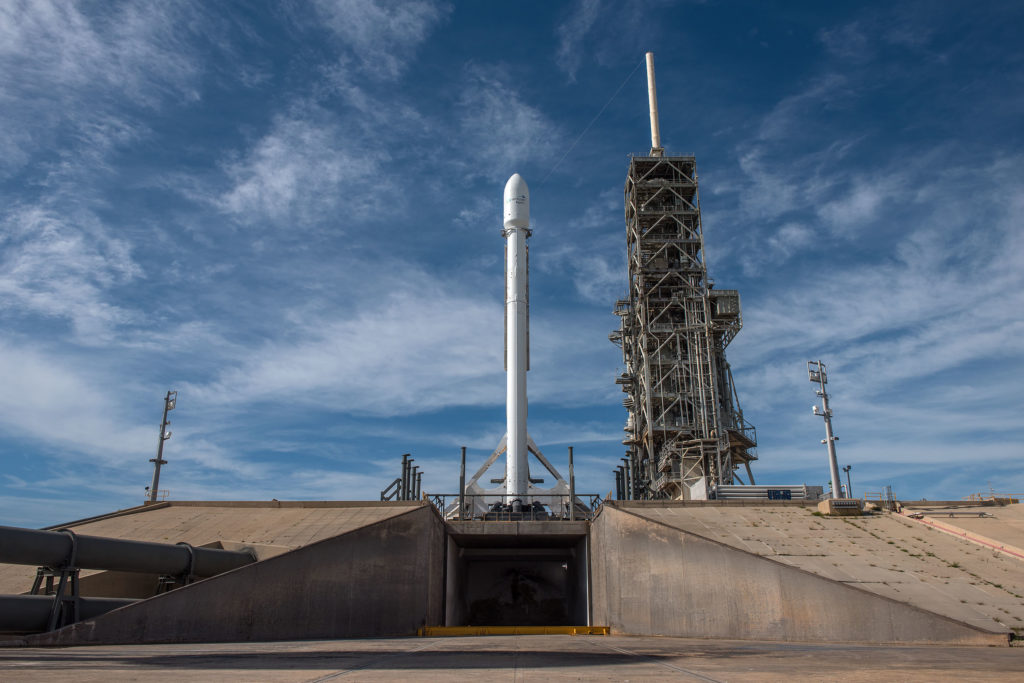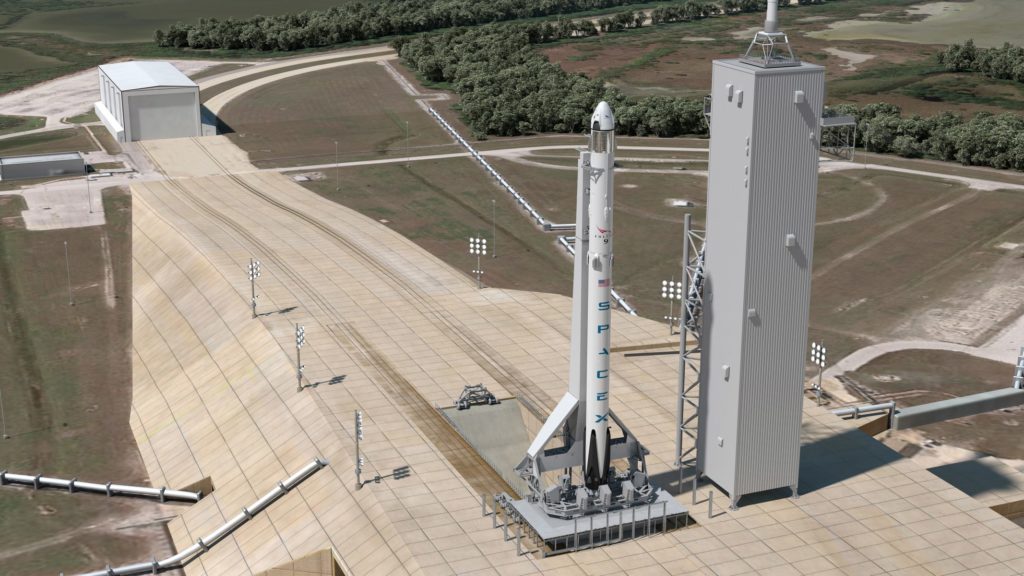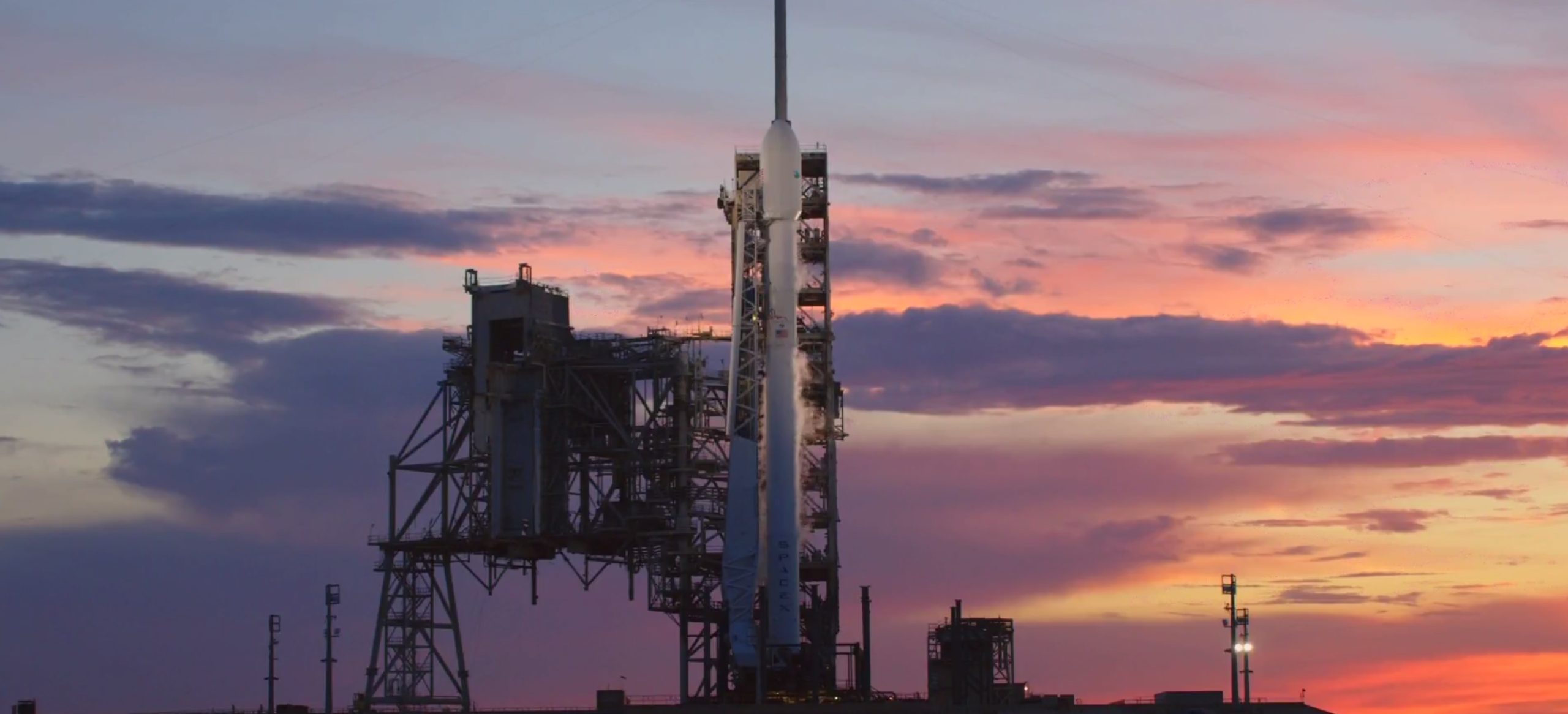
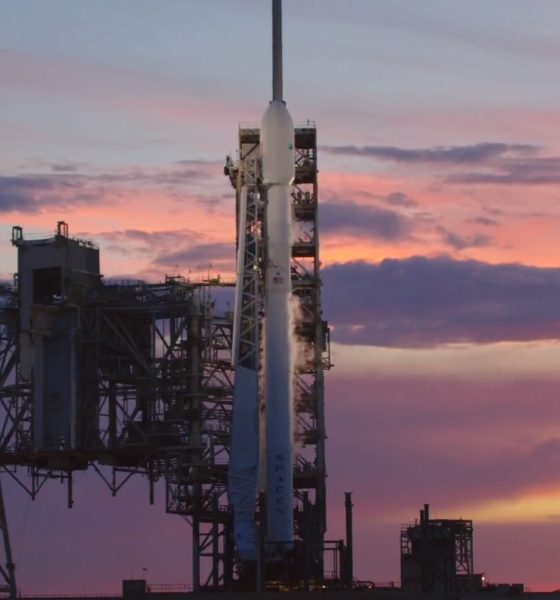
SpaceX
SpaceX prepares for last launch until August: Caution over cadence
After a second automatic T-10s launch abort Monday night, Elon Musk expressed a welcome prioritization of caution over an attempt to break cadence records. As such, the launch team at LC-39A are standing down an attempt today and instead conducting a full review of the Falcon 9 vehicle and ground systems, pushing the launch to either July 5th or 6th. As Musk transparently phrased it, there is only one chance to get a rocket launch right.
We're going to spend the 4th doing a full review of rocket & pad systems. Launch no earlier than 5th/6th. Only one chance to get it right …
— Elon Musk (@elonmusk) July 4, 2017
Following a truly unprecedented series of launches for the company, there was understandably a bit of annoyance from fans watching the coverage for a second time, as well as from journalists seeking to cover the launch. I think a tweet from former NASA Space Shuttle Program Manager Wayne Hale summed up the proper response most coherently, however, stating that “it’s tough to remain vigilant and do the right thing, extremely tough after a couple of launch scrubs and [with] range closure looming”. Remaining vigilant is precisely what SpaceX is doing by calling off another attempt on July 4th and choosing to instead carefully examine the systems involved to ensure that there is no real issue with pad or vehicle hardware.
For launch companies, there are an untold number of external and internal pressures urging executives to attempt launches, be those financial, political, or something as simple as employees wanting to get home for a holiday. However, past failures of launch vehicles, particularly the Space Shuttle, have demonstrated that constant vigilance is a necessity when dealing with rocketry. Wayne Hale was flight director for forty Shuttle launches. In fact, he became Program Manager the day of the Columbia disaster, which occurred at the beginning of February in 2003.
In this context, his statement is almost certainly intended as positive – albeit solemn – encouragement for the choice to take a more cautious route before attempting another launch. SpaceX itself has experienced two widely publicized failures of the Falcon 9, with the most recent of those having occurred less than ten months ago. After China suffered a complex failure during the second launch of their Long March 5 heavy lift vehicle last Sunday, Musk offered sympathy for those involved. Any failure in the launch industry often acts as a wake-up call for other companies and agencies involved, and undoubtedly becomes a reminder that one cannot become too comfortable or allow launch processes or vehicle manufacturing to become too routine when the stakes are as high as they can be.
Sorry to hear about China launch failure today. I know how painful that is to the people who designed & built it. https://t.co/iOkj6egF3O
— Elon Musk (@elonmusk) July 2, 2017
It goes without saying that SpaceX is sharply aware of the need to ensure reliability and safety as they march ever closer to the debut flight of Crew Dragon and its first crewed launches, likely to occur in early 2018. If the stakes for launching the payloads of commercial customers are already high, the price of failures that could lead to loss of life are unspeakable and ought to humble those fans and bystanders who may be losing patience while waiting for a third (admittedly enthralling) launch. Those eager to watch SpaceX’s live coverage must seek to remember that the launches we love to watch occur because paying customers have placed trust in SpaceX to deliver their payloads to orbit, be those payloads massive geostationary communications satellites or astronauts and cargo headed to the ISS. Rightfully so, the customer will always come first, and routine live coverage of rocket launches must always be treated as the luxury it is for the indefinite future.
SpaceX has successfully recovery and reused both Falcon 9 and Cargo Dragon in the last several weeks, and has also recovered three first stages from the three related launches that occurred in that same time period. (SpaceX)
Admittedly, a cornerstone of SpaceX’s mission as a company is making access to orbit reliable, affordable, and routine, but there will always be risk in rocket launches, just as there will always be risk when one boards a plane, drives a car, or simply walks down the sidewalk along a busy street. Minimizing and reducing the risk present in spaceflight will take a considerable amount of time and effort, and doing what is necessary to prevent failures from negatively impacting the customers that make SpaceX viable as a company is both a rational and ethical strategy.
Returning to current events, the Falcon 9 intended to launch Intelsat 35e went horizontal on July 4, and is likely now in the integration facility present at LC-39A, providing easier access to engineers as they comb over the vehicle to ensure its health. After an absolutely picturesque launch attempt Monday evening, weather is looking even better for a potential launch attempt on either Wednesday or Thursday evening.
If the vehicle and pad cooperate, Intelsat 35e will be a facing send off for the Eastern Range before it shuts down for the remainder of July to undergo routine maintenance. SpaceX currently does not have Vandenberg (West coast) missions scheduled until August, so July will likely see no launches from the company. There is still plenty to be done in lieu of launching customer payloads, however. LC-40, the pad damaged in the Amos-6 static fire incident last September, is currently preparing to be reactivated, with a recent interview of Gwynne Shotwell pointing to its initial availability sometime in August. Once it is reactivated, all single core Falcon launches will be transferred to LC-40, and LC-39A will begin undergoing structural modifications to accommodate both crewed missions in 2018 and Falcon Heavy, which could debut as early as Q4 of 2017.
- Intelsat 35e, July 2nd. (SpaceX)
- A render of Falcon 9 and Crew Dragon at LC-39A. (SpaceX)
The two most visible changes that will occur at LC-39A will be the installation of additional hold-down clamps and modifications to the Transporter Erector, as well as a Crew Access Arm, which will be attached to the large, vertical structure seen directly right of Falcon 9. Of note, it is very likely that at least two, if not all three of the first Falcon Heavy’s cores are already present at the Cape. After years of being deemed a paper rocket, Falcon Heavy is indeed very real and very close to being able to conduct its first launches.
A month of no launches from SpaceX will undoubtedly be less than thrilling, but the Air Force and Kennedy Space Center employees will get a much-deserved break from a busy launch manifest ahead of what will likely be an even busier final four months of the year. There is a lot to look forward to.

Elon Musk
Starlink passes 9 million active customers just weeks after hitting 8 million
The milestone highlights the accelerating growth of Starlink, which has now been adding over 20,000 new users per day.

SpaceX’s Starlink satellite internet service has continued its rapid global expansion, surpassing 9 million active customers just weeks after crossing the 8 million mark.
The milestone highlights the accelerating growth of Starlink, which has now been adding over 20,000 new users per day.
9 million customers
In a post on X, SpaceX stated that Starlink now serves over 9 million active users across 155 countries, territories, and markets. The company reached 8 million customers in early November, meaning it added roughly 1 million subscribers in under seven weeks, or about 21,275 new users on average per day.
“Starlink is connecting more than 9M active customers with high-speed internet across 155 countries, territories, and many other markets,” Starlink wrote in a post on its official X account. SpaceX President Gwynne Shotwell also celebrated the milestone on X. “A huge thank you to all of our customers and congrats to the Starlink team for such an incredible product,” she wrote.
That growth rate reflects both rising demand for broadband in underserved regions and Starlink’s expanding satellite constellation, which now includes more than 9,000 low-Earth-orbit satellites designed to deliver high-speed, low-latency internet worldwide.
Starlink’s momentum
Starlink’s momentum has been building up. SpaceX reported 4.6 million Starlink customers in December 2024, followed by 7 million by August 2025, and 8 million customers in November. Independent data also suggests Starlink usage is rising sharply, with Cloudflare reporting that global web traffic from Starlink users more than doubled in 2025, as noted in an Insider report.
Starlink’s momentum is increasingly tied to SpaceX’s broader financial outlook. Elon Musk has said the satellite network is “by far” the company’s largest revenue driver, and reports suggest SpaceX may be positioning itself for an initial public offering as soon as next year, with valuations estimated as high as $1.5 trillion. Musk has also suggested in the past that Starlink could have its own IPO in the future.
News
SpaceX shades airline for seeking contract with Amazon’s Starlink rival

SpaceX employees, including its CEO Elon Musk, shaded American Airlines on social media this past weekend due to the company’s reported talks with Amazon’s Starlink rival, Leo.
Starlink has been adopted by several airlines, including United Airlines, Qatar Airways, Hawaiian Airlines, WestJet, Air France, airBaltic, and others. It has gained notoriety as an extremely solid, dependable, and reliable option for airline travel, as traditional options frequently cause users to lose connection to the internet.
Many airlines have made the switch, while others continue to mull the options available to them. American Airlines is one of them.
A report from Bloomberg indicates the airline is thinking of going with a Starlink rival owned by Amazon, called Leo. It was previously referred to as Project Kuiper.
American CEO Robert Isom said (via Bloomberg):
“While there’s Starlink, there are other low-Earth-orbit satellite opportunities that we can look at. We’re making sure that American is going to have what our customers need.”
Isom also said American has been in touch with Amazon about installing Leo on its aircraft, but he would not reveal the status of any discussions with the company.
The report caught the attention of Michael Nicolls, the Vice President of Starlink Engineering at SpaceX, who said:
“Only fly on airlines with good connectivity… and only one source of good connectivity at the moment…”
CEO Elon Musk replied to Nicolls by stating that American Airlines risks losing “a lot of customers if their connectivity solution fails.”
American Airlines will lose a lot of customers if their connectivity solution fails
— Elon Musk (@elonmusk) December 14, 2025
There are over 8,000 Starlink satellites in orbit currently, offering internet coverage in over 150 countries and territories globally. SpaceX expands its array of satellites nearly every week with launches from California and Florida, aiming to offer internet access to everyone across the globe.
Currently, the company is focusing on expanding into new markets, such as Africa and Asia.
News
Tesla hints at Starlink integration with recent patent
“By employing polymer blends, some examples enable RF transmission from all the modules to satellites and other communication devices both inside and outside the vehicle.”

Tesla hinted at a potential Starlink internet terminal integration within its vehicles in a recent patent, which describes a vehicle roof assembly with integrated radio frequency (RF) transparency.
The patent, which is Pub. No U.S. 2025/0368267 describes a new vehicle roof that is made of RF-transparent polymer materials, allowing and “facilitating clear communication with external devices and satellites.”
Tesla believes that a new vehicle roof design, comprised of different materials than the standard metallic or glass elements used in cars today, would allow the company to integrate modern vehicular technologies, “particularly those requiring radio frequency transmission and reception.
Tesla has recently filed a US patent application on integrating RF transparent materials into the roof structure.
“facilitating clear communication with external devices and satellites”
Tesla fleet is getting @Starlink connectivity integration soon. LFG @Tesla @elonmusk… pic.twitter.com/bLa8YtPLd1
— Chansoo Byeon (@Chansoo) December 9, 2025
Instead of glass or metallic materials, Tesla says vehicles may benefit from high-strength polymer blends, such as Polycarbonate, Acrylonitrile Butadiene Styrene, or Acrylonitrile Styrene Acrylate.
These materials still provide ideal strength metrics for crashworthiness, stiffness for noise, vibration, and harshness control, and are compliant with head impact regulations.
They would also enable better performance with modern technologies, like internet terminals, which need an uninterrupted signal to satellites for maximum reception. Tesla writes in the patent:
“By employing polymer blends, some examples enable RF transmission from all the modules to satellites and other communication devices both inside and outside the vehicle.”

One of the challenges Tesla seems to be aware of with this type of roof design is the fact that it will still have to enable safety and keep that at the forefront of the design. As you can see in the illustration above, Tesla plans to use four layers to increase safety and rigidity, while also combating noise and vibration.
It notes in the patent that disclosed examples still meet the safety requirements outlined in the Federal Motor Vehicle Safety Standards (FMVSS).
Starlink integrated directly into Tesla vehicles would be a considerable advantage for owners. It would come with a handful of distinct advantages.
Initially, the inclusion of Starlink would completely eliminate cellular dead zones, something that is an issue, especially in rural areas. Starlink would provide connectivity in these remote regions and would ensure uninterrupted service during road trips and off-grid adventures.
It could also be a critical addition for Robotaxi, as it is crucial to have solid and reliable connectivity for remote monitoring and fleet management.
Starlink’s growing constellation, thanks to SpaceX’s routine and frequent launch schedule, will provide secure, stable, and reliable internet connectivity for Tesla vehicles.
Although many owners have already mounted Starlink Mini dishes under their glass roofs for a similar experience, it may be integrated directly into Teslas in the coming years, either as an upgrade or a standard feature.
